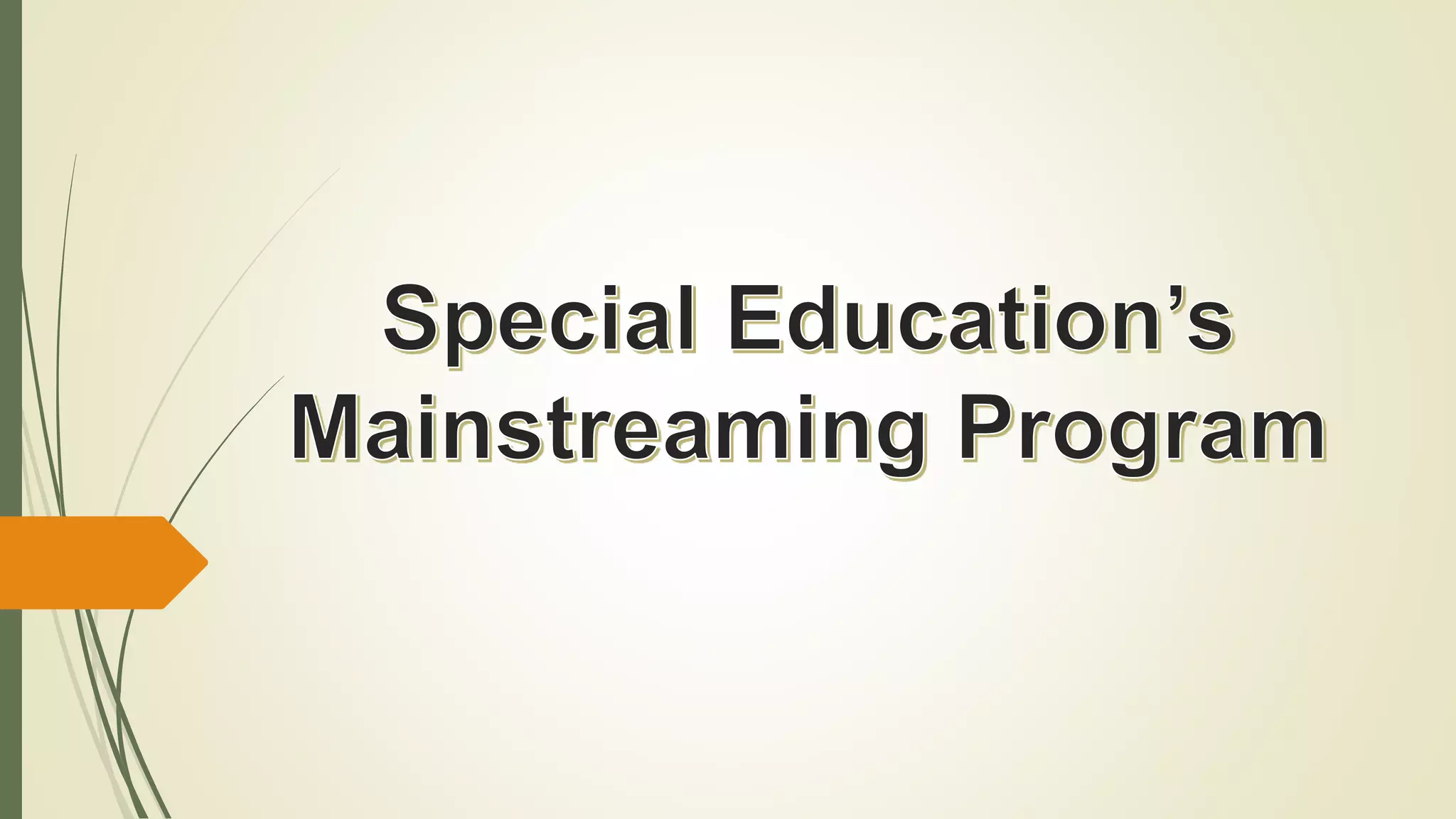Mainstreaming involves placing exceptional learners in regular classes, utilizing accommodations and modifications to support their learning needs. Shadow teaching is a service where a skilled educator assists in curriculum planning and behavior management to aid students with learning differences. Legal provisions, such as the Education Act of 1982, outline the responsibility of the state to accommodate special education needs within the formal education system.


































